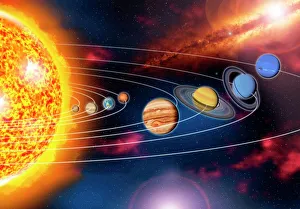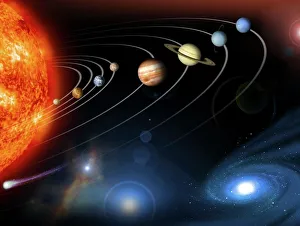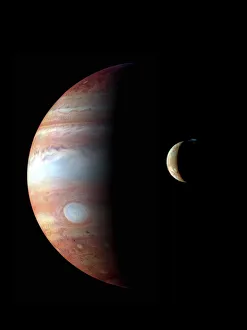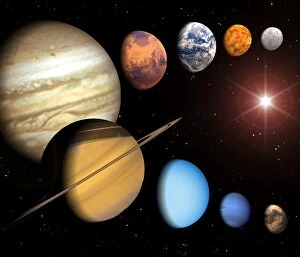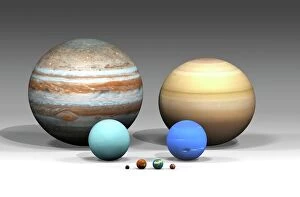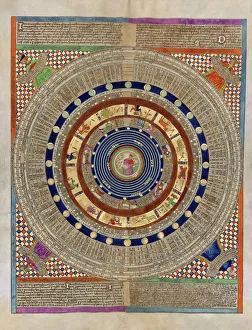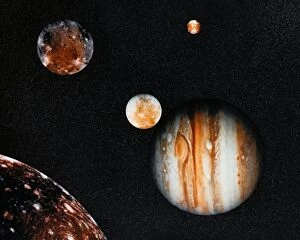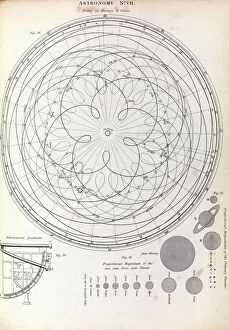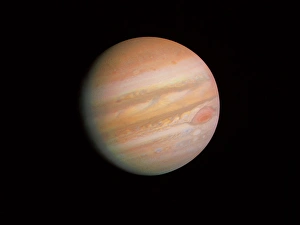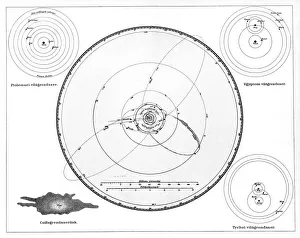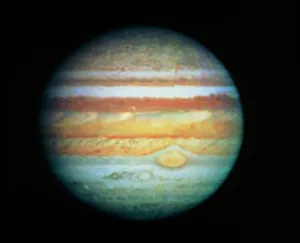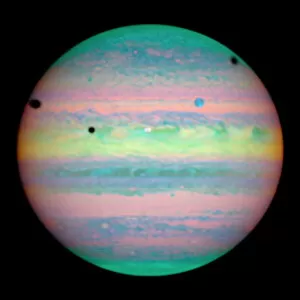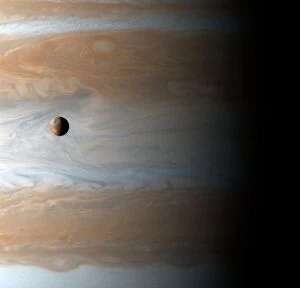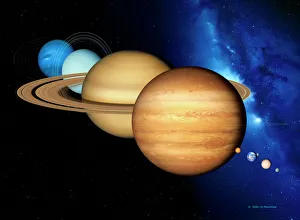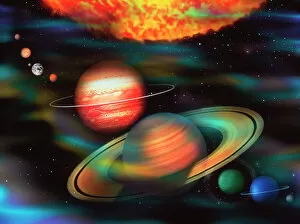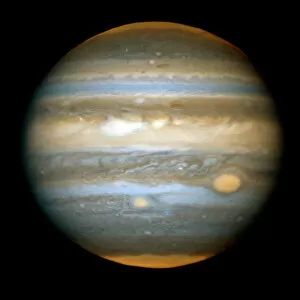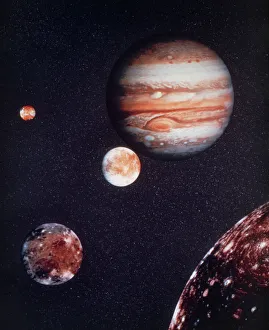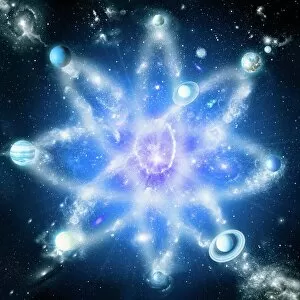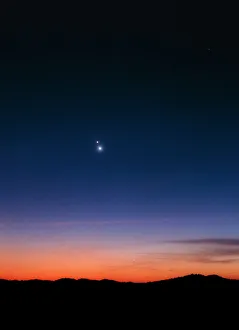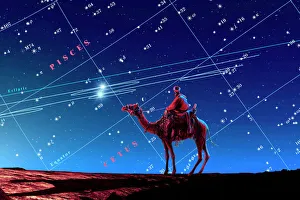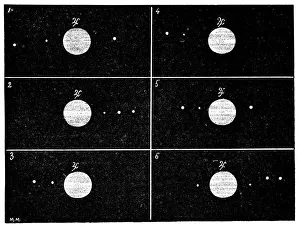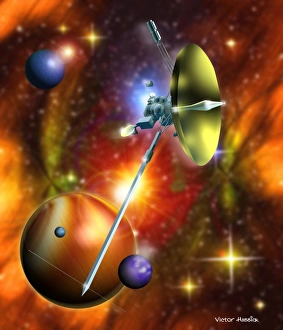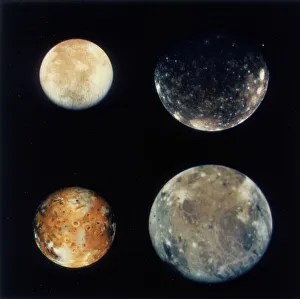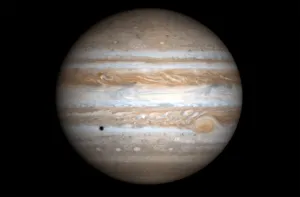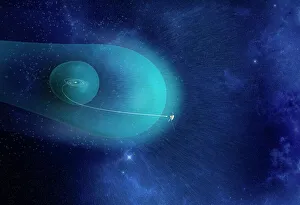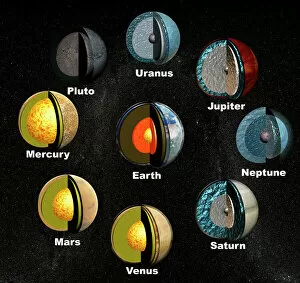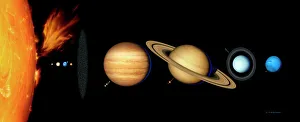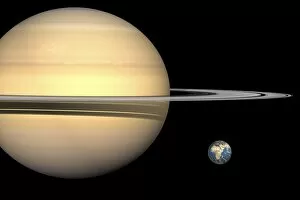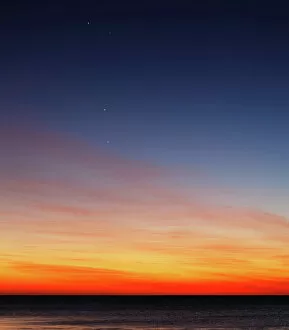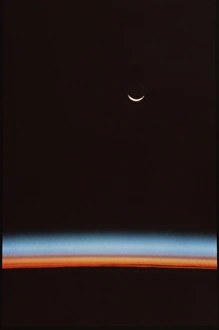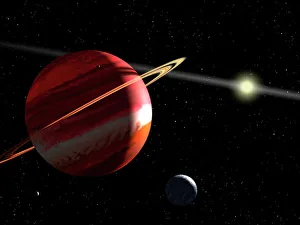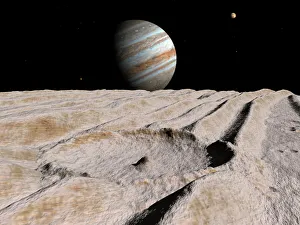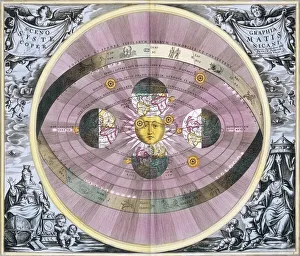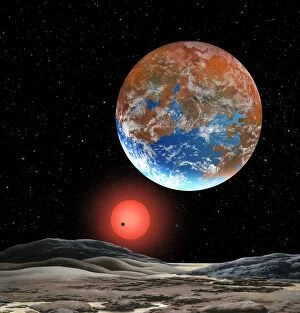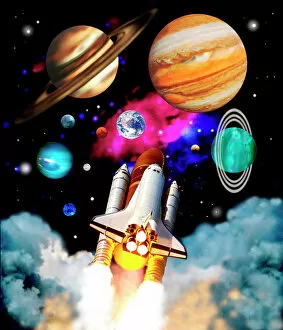Jupiter Collection
Jupiter is the fifth planet from the Sun and the largest in our Solar System, and is a gas giant composed mostly of hydrogen and helium
Choose a picture from our Jupiter Collection for your Wall Art and Photo Gifts
797 items
All Professionally Made to Order for Quick Shipping
-
Jupiter Collection
Jupiter is the fifth planet from the Sun and the largest in our Solar System, and is a gas giant composed mostly of hydrogen and helium, with a mass two and a half times that of all other planets combined. Jupiter has an average radius of 69,911 km, making it 11 times wider than Earth. Its most recognizable feature is its Great Red Spot, an anticyclonic storm larger than Earth that has been raging for at least 300 years. It also has 79 known moons orbiting it; four of them are large enough to be considered planets in their own right. Its strong gravitational field makes it an important influence on other objects in our Solar System, such as asteroids or comets passing through its vicinity. With its vast size and powerful presence in space exploration science, Jupiter continues to fascinate us with its many mysteries yet to be discovered.
+
Our beautiful pictures are available as Framed Prints, Photos, Wall Art and Photo Gifts
The Jupiter collection from Media Storehouse is a stunning compilation of space exploration images that showcase the beauty and mystery of the largest planet in our solar system. Our collection offers a wide range of wall art, framed prints, photo prints, canvas prints, jigsaw puzzles, and greeting cards featuring breathtaking photographs taken by NASA's Juno spacecraft. From close-up shots of Jupiter's swirling clouds to its iconic Great Red Spot and massive polar auroras, our collection captures the awe-inspiring wonder of this gas giant. Whether you're looking for a striking piece to hang on your wall or a unique gift for an astronomy enthusiast, the Jupiter collection has something for everyone. Each item in our collection is made with high-quality materials to ensure that every detail is captured with precision and clarity. With its vibrant colors and intricate details, the Jupiter collection brings the wonders of outer space into your home or office.
+
What are Jupiter (Planets Space Exploration Science) art prints?
Jupiter art prints are high-quality reproductions of stunning images captured by NASA's Juno spacecraft during its mission to study the largest planet in our solar system. These prints showcase Jupiter's mesmerizing cloud formations, swirling storms, and vibrant colors in incredible detail. They make perfect additions to any space enthusiast's collection or as gifts for those who appreciate the beauty of our universe. These art prints are available in a variety of sizes and finishes, including canvas, framed, and poster options. Each print is carefully crafted using state-of-the-art printing technology to ensure that every detail is captured with precision and accuracy. Whether you're looking for a striking centerpiece for your living room or an inspiring piece for your office, these Jupiter art prints will transport you on a journey through space like never before.
+
What Jupiter (Planets Space Exploration Science) art prints can I buy from Media Storehouse?
We offer a wide range of Jupiter art prints that are perfect for space exploration enthusiasts and science lovers. You can choose from a variety of stunning images captured by NASA's Juno spacecraft, including close-up shots of the planet's swirling clouds, its iconic Great Red Spot, and its four largest moons - Io, Europa, Ganymede, and Callisto. In addition to these breathtaking photographs, Media Storehouse also offers artistic renditions of Jupiter that showcase the planet's unique beauty in different ways. From abstract designs to vintage illustrations and colorful digital paintings, there is something for everyone. Whether you're looking to decorate your home or office with awe-inspiring visuals of our solar system's largest planet or want to gift a special someone with a piece of space-themed artwork they'll cherish forever, we have got you covered.
+
How do I buy Jupiter (Planets Space Exploration Science) art prints?
To buy Jupiter art prints from Media Storehouse, you can browse our collection of space-themed artwork and select the print that catches your eye. Once you have found the perfect piece, simply add it to your cart and proceed to checkout. You will be prompted to enter your shipping and payment information before finalizing the purchase. We offer a variety of sizes for their prints, so make sure to choose one that fits your desired display area. Their high-quality printing process ensures that each print is sharp and vibrant, capturing all the intricate details of Jupiter's swirling clouds. Whether you are looking for a unique addition to your home decor or a gift for an astronomy enthusiast, these stunning art prints are sure to impress. With our easy ordering process, buying Jupiter art prints has never been easier.
+
How much do Jupiter (Planets Space Exploration Science) art prints cost?
We offer a wide range of Jupiter art prints that are perfect for space enthusiasts and collectors alike. Our selection includes high-quality prints featuring stunning images of the gas giant captured by NASA's Juno spacecraft and other missions. While we cannot provide specific pricing information in this response, our Jupiter art prints are competitively priced to ensure that they are accessible to as many people as possible. We believe that everyone should have the opportunity to enjoy beautiful and inspiring artwork depicting our incredible universe. Whether you're looking for a small print to display on your desk or a large canvas to hang on your wall, we have options available in various sizes and formats. All of our prints are produced using state-of-the-art printing technology and premium materials to ensure exceptional quality and longevity. If you're interested in purchasing one of our Jupiter art prints or exploring our full collection of space-themed artwork, please visit us at Media Storehouse today.
+
How will my Jupiter (Planets Space Exploration Science) art prints be delivered to me?
Your Jupiter art prints from Media Storehouse will be delivered to you in a safe and secure manner. We use high-quality packaging materials to ensure that your artwork arrives in pristine condition. Depending on the size of your order, we may ship it flat or rolled up in a tube. We work with trusted shipping partners to deliver your artwork as quickly and efficiently as possible. You can track your order online using the tracking number provided once your package has been dispatched. We take great pride in our commitment to customer satisfaction. If for any reason you are not completely satisfied with your purchase, please contact us and we will do everything we can to make it right. Whether you're looking for stunning wall art or unique gifts for friends and family, our Jupiter art prints are sure to impress. Order yours today and experience the beauty of space exploration science.

